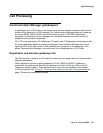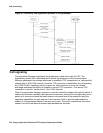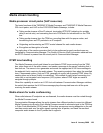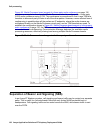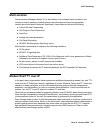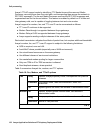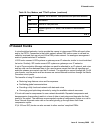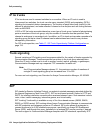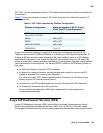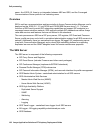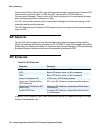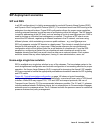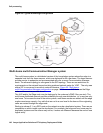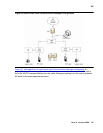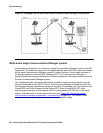
SIP
Issue 6 January 2008 135
RFC 3261, and so interoperates with any SIP-enabled endpoint/station that also complies with
the standard.
Table 17
shows the maximum number of SIP trunks supported out of the total number of IP
trunks supported.
Avaya Communication Manager supports SIP endpoints, including the Avaya 4602 SIP
Telephone and Avaya IP Softphone Release 5. In addition to its IP telephony capabilities, IP
Softphone R5 also includes Instant Messaging (IM) client software, which is a SIP-enabled
application that connects to the Avaya Converged Communication Server for IM control. By
means of having SIP-enabled endpoints managed by Communication Manager, many features
can be extended to these endpoints. The servers (S8300, S8500 or S8700-series) function in
four ways:
● As Plain Old Telephone Service (POTS) gateways
● As support for name and number delivery between and among the various non-SIP
endpoints supported by Communication Manager
For instance, analog, DCP (Digital Communications Protocol) or H.323 stations, and
analog, digital or IP (internet protocol) trunks.
● As support for new SIP-enabled endpoints, such as the Avaya 4602 SIP telephone
● As a telephony feature server to SIP endpoints
The set of features supported by SIP itself is augmented by those supported by
Communication Manager.
Avaya SIP Enablement Services (SES)
Avaya SIP Enablement Services (SES) is part of the Converged Communications Server
portfolio with Application Enablement Services (AES). Prior to SES 3.0, SES was named
Converged Communications Server as a product name, but that was later made a portfolio-level
Table 17: SIP Trunk Capacities by Platform Configuration
Platform Configuration Maximum Number of SIP IP Trunks
of the Total IP Trunks Supported
S8700-series
(fiber-PNC or IP-PNC)
5000 of 8000
S8500 800 of 800
S8400 400 of 400
S8300/G700/G350 450 of 450
S8300/G250 10 of 10



